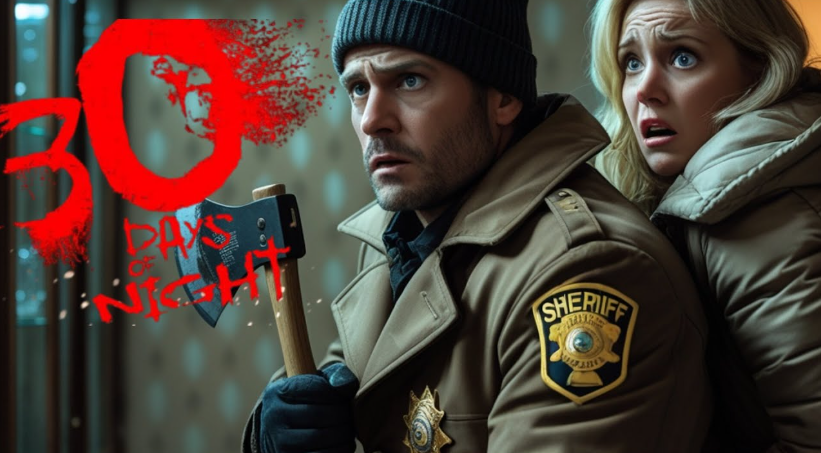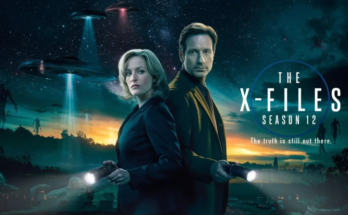30 Days of Night (2007): The Most Terrifying Vampire Movie Ever
“30 Days of Night,” directed by David Slade and based on the graphic novel of the same name by Steve Niles and Ben Templesmith, is widely regarded as one of the most chilling vampire films ever made. Its unique premise, coupled with its stark depiction of horror, sets it apart from traditional vampire lore. The film takes place in Barrow, Alaska—a remote town that experiences an annual polar night lasting 30 days without sunlight. This unnatural darkness becomes the perfect hunting ground for a group of ancient vampires led by their ruthless leader, Marlow.
Plot Summary and Spoilers
The story begins with Eben Oleson (played by Josh Hartnett), the sheriff of Barrow, preparing his small team for the upcoming month-long night. As the sun sets for the final time before the long darkness descends, strange occurrences begin to unfold. Power lines are sabotaged, cutting off communication with the outside world, and residents start disappearing under mysterious circumstances. It soon becomes clear that they are being hunted by a pack of bloodthirsty vampires who have traveled specifically to exploit this period of uninterrupted darkness.
Marlow (played menacingly by Danny Huston) emerges as the primary antagonist—a charismatic yet utterly terrifying figure whose calm demeanor masks his sadistic nature. Unlike typical cinematic vampires, these creatures are feral, grotesque, and devoid of any romanticized traits. They move like predators, speak in guttural tones, and show no mercy to their victims. Their arrival turns Barrow into a nightmare, where survival depends on sheer luck or desperate ingenuity.
Eben’s wife, Stella (Melissa George), plays a crucial role in trying to save the remaining townsfolk while also seeking revenge after witnessing her brother’s brutal death at the hands of the vampires. Together, Eben and Stella attempt to rally survivors and devise strategies to fend off the relentless attacks. One particularly harrowing scene involves a woman setting herself on fire rather than succumbing to the vampires—a moment that underscores the hopelessness of their situation.
As the days drag on, the dwindling number of survivors retreats to a fortified hideout. However, betrayal within their ranks leads to further tragedy. In a shocking twist, Eben injects himself with vampire blood to gain enough strength to confront Marlow directly. The climactic battle between Eben and Marlow is both brutal and visually stunning, culminating in Eben’s self-sacrifice. He lures Marlow into the open just as dawn breaks, exposing them both to sunlight and destroying the vampires in a fiery blaze.

Budget and Box Office Performance
“30 Days of Night” was produced on a modest budget of approximately $30 million, which included costs for special effects, set design, and filming in New Zealand to replicate the icy landscapes of Alaska. Despite its relatively low budget, the film achieved remarkable success at the box office. Upon its release in October 2007, it grossed over $75 million worldwide, making it a profitable venture for Columbia Pictures and Ghost House Pictures.
The film’s financial success can be attributed to several factors: its innovative take on vampire mythology, strong performances from the cast, and effective marketing campaigns that emphasized its visceral horror elements. Additionally, the timing of its release during Halloween season helped attract audiences looking for spine-tingling thrills.
Why It Stands Out
What makes “30 Days of Night” so terrifying is its departure from conventional vampire tropes. These vampires aren’t suave immortals; they’re savage beasts driven purely by hunger. The isolation of Barrow amplifies the sense of dread, as there’s nowhere to run and no help coming. The absence of sunlight strips away humanity’s greatest weapon against such creatures, leaving the characters—and viewers—feeling utterly vulnerable.
Moreover, the film doesn’t shy away from showing the brutality of its premise. Graphic violence, combined with moments of psychological terror, ensures that the audience remains on edge throughout. The decision to keep the vampires largely silent, communicating through snarls and gestures, adds to their otherworldly menace.
In conclusion, “30 Days of Night” stands as a testament to how reinventing classic horror archetypes can lead to unforgettable cinematic experiences. With its gripping narrative, memorable villain, and impressive financial returns, it remains a standout entry in the vampire genre—one that continues to haunt viewers long after the credits roll.


